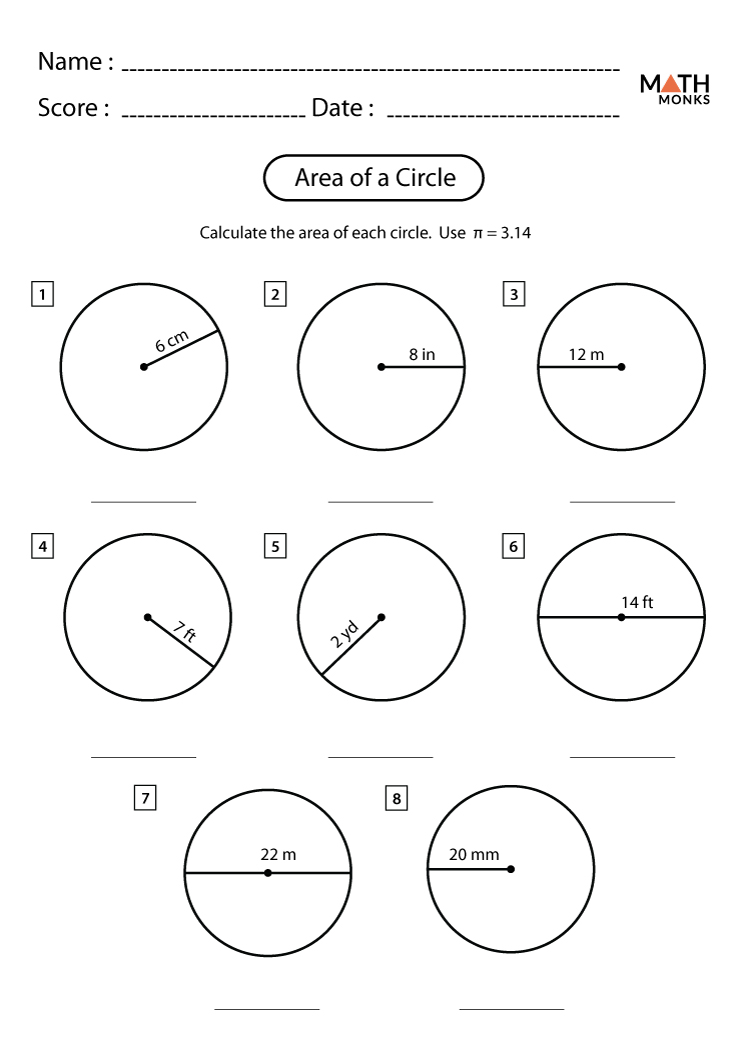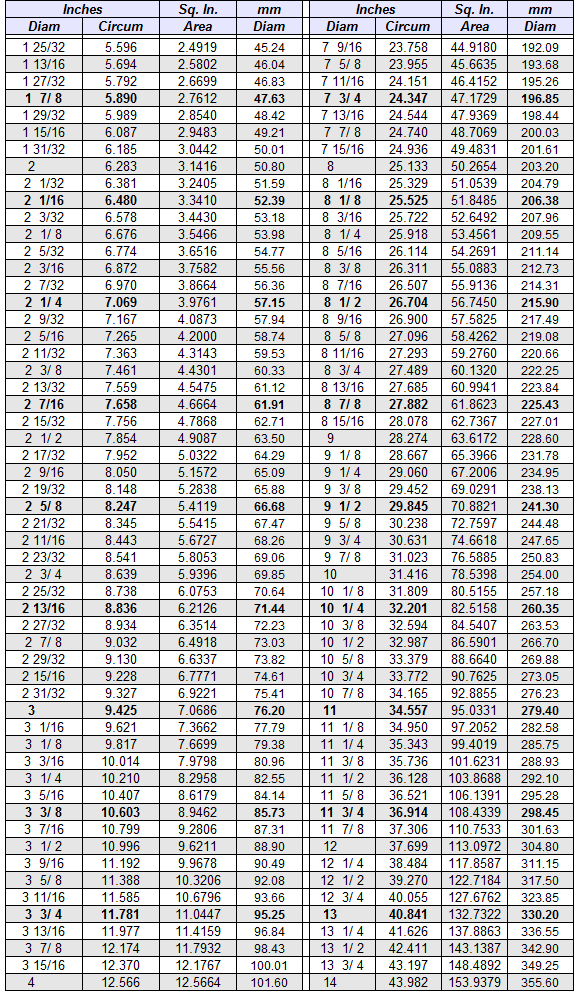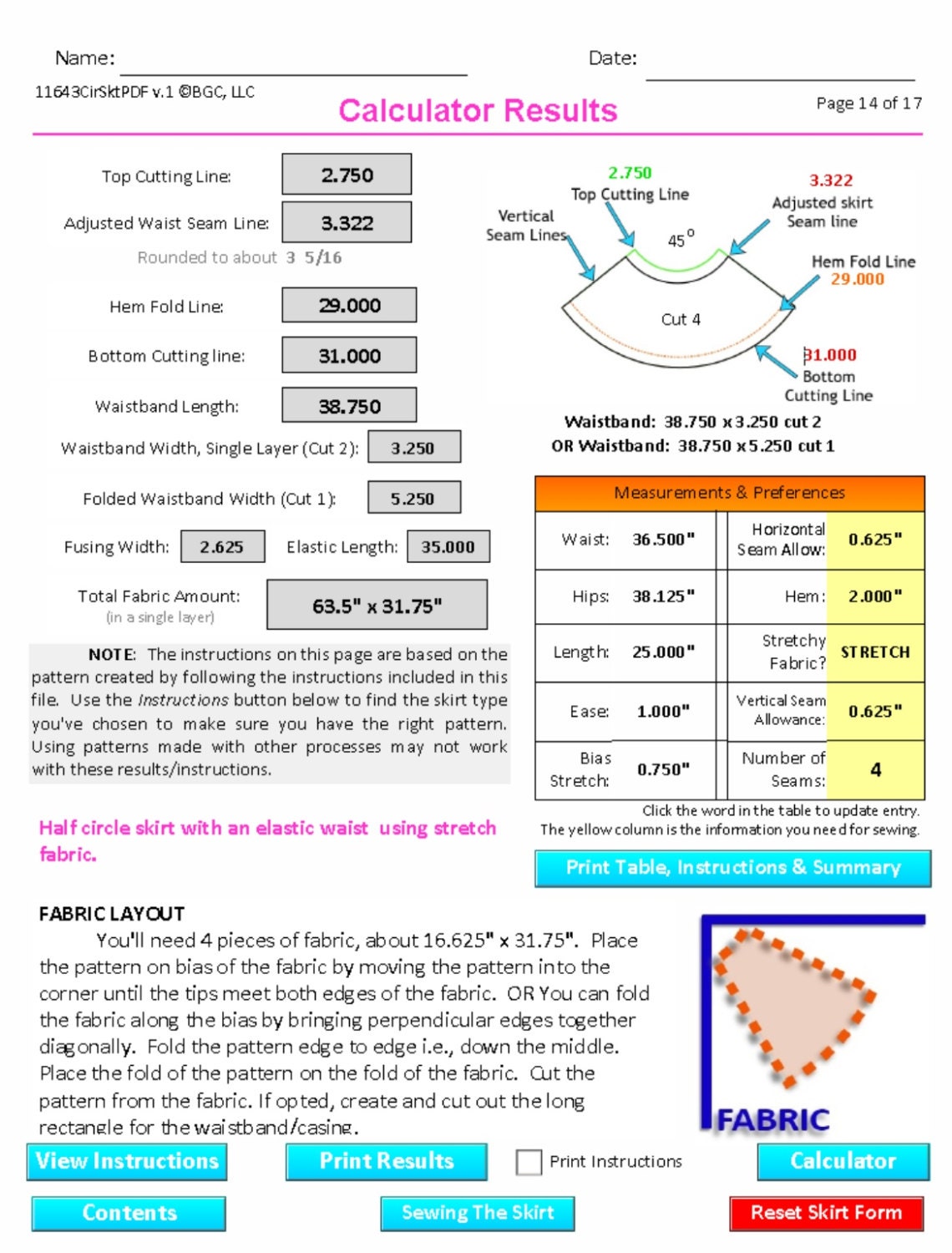The circumference of a circle of radius $r$ is $2\pi r$. This well known formula is taken up here from the point of view of similarity. It is important to note in this task that the definition of $\pi$ already involves the circumference of a circle, a particular circle. In order to show that the ratio of circumference to diameter does not depend on the size of the circle, a similarity argument is required. Two different approaches are provided, one using the fact that all circles are similar and a second using similar triangles. This former approach is simpler but the latter has the advantage of leading into an argument for calculating the area of a circle.
Circumference is really just another way of talking about the perimeter, or the distance around, a circle. This can be calculated in exact form (in terms of \(\pi\) or as a decimal approximation using the circumference formula. From there you can also solve applied problems or more complicated mathematical problems using your general understanding of circles and their properties. The learning outcome of this article is that one can calculate the circumference of circular objects and circular paths. We'll teach you the key circumference formulas you need to figure out the circumference of a circle when you know either the diameter or radius.
This first argument is an example of MP7, Look For and Make Use of Structure. The key to this argument is identifying that all circles are similar and then applying the meaning of similarity to the circumference. The second argument exemplifies MP8, Look For and Express Regularity in Repeated Reasoning.
Here the key is to compare the circle to a more familiar shape, the triangle. Is called the circumference and is the linear distance around the edge of a circle. The circumference of a circle is proportional to its diameter, d, and its radius, r, and relates to the famous mathematical constant, pi (π). Two formulas are used to find circumference, C, depending on the given information. Both circumference formulas use the irrational number Pi, which is symbolized with the Greek letter, π. Pi is a mathematical constant and it is also the ratio of the circumference of a circle to the diameter.
When the formula for calculating the circumference of a circle is used, the circle's radius is considered. As a result, the radius or diameter value must be known to calculate the circle's perimeter or circumference. This is because a circle is a curved figure. Therefore, to calculate the circumference of a circle, we apply a formula that uses the radius or the diameter of the circle and the value of Pi (π). The formula for the circumference of a circle in terms of its radius comes from the definition of the constant . The constant is defined as the ratio of any circles circumference divided by its diameter.
This is illustrated in the figure below. The radius, the diameter, and the circumference are the three defining aspects of every circle. Given the radius or diameter and pi you can calculate the circumference.
How To Learn Circumference Of A Circle The diameter is the distance from one side of the circle to the other at its widest points. The diameter will always pass through the center of the circle. The radius is half of this distance.
You can also think of the radius as the distance between the center of the circle and its edge. The distance from the centre to the outer line of the circle is called a radius. It is the most important quantity of the circle based on which formulas for the area and circumference of the circle are derived. Twice the radius of a circle is called the diameter of the circle. The diameter cuts the circle into two equal parts, which is called a semi-circle. The first solution requires a general understanding of similarity of shapes while the second requires knowledge of similarity specific to triangles.
For example, the length of a 180 degree arc must be half the circumference of the circle, the product of pi and the radius. The length of any arc is equal to whatever fraction of a full rotation the arc spans multiplied by the circumference of the circle. A 45 degree arc, for example, spans one-eighth of a full rotation, and is therefore equal to one-eighth the circumference of that circle.
The length of an arc of n degrees equals (n/360) times the circumference. Below these concepts are pictured. To make sure you are measuring the diameter correctly, it should be the biggest measurement you can get. If by moving the measurement instrument slightly you get a bigger diameter size, then go with that. It includes a couple of embedded videos.
Say you're trying to calculate the area of a circle with a radius of 3 inches. You would multiply 3 times 3 to get 9, and multiply 9 times π. Remember that π is equal to 3.14.
Also note that when you multiply inches by inches, you get square inches, which is a measurement of area instead of length. The term circumference is used when measuring physical objects, as well as when considering abstract geometric forms. The perimeter of a circle is the same as the circumference of a circle. It is the total length of the outer boundary of the circle. The perimeter or circumference of a circle is the product of the constant 'pi' and the diameter of the circle. It is expressed in linear units like m, inch, cms, feet.
Once again in this example, we're given the radius of the circle. Although it's not a clean number like our previous example, but we can still simply plug the number directly into the formula like what we did above. Be aware of the units that this circle's radius is given in and remember to give your final answer in the same unit.
In this question, we find that the circumference is equalled to 53.41m. It looks like you calculated the area of a circle using a radius of 2; in this figure, the radius of each circle is 1. To find the area of the figure, imagine the two semi-circles are put together to create one circle. Then calculate the area of the circle and add it to the area of the square. Along the way, you also learned a little geography and history, which may also come in handy to you. This is how we calculate the circumference of a circle and understand its difference from the area.
It is a one-dimensional physical quantity that can be easily understood and calculated if we follow how the formula is determined. Focus on the solved examples and start using the formula to understand the concept better. When you are doing calculations involving a circle, you frequently use the number π, or pi. Pi is defined as being equal to the circumference of a circle -- the distance around that circle -- divided by its diameter. However, you don't need to memorize this formula when working with π, since it is a constant.
The value of π is always the same, 3.14. Students beginning geometry can expect to encounter problem sets that involve calculating the area and circumference of a circle. You can solve these problems as long as you know the circle's radius and can do some simple multiplication.
If you learn the value of the constant π and the basic equations for a circle's properties, you can quickly find the area or circumference of any circle. As stated before, the perimeter or circumference of a circle is the distance around a circle or any circular shape. The circumference of a circle is the same as the length of a straight line folded or bent to make the circle. The circumference of a circle is measured in meters, kilometers, yards, inches, etc. The distance around a polygon, such as a square or a rectangle, is called the perimeter .
On the other hand, the distance around a circle is referred to as the circumference . Therefore, the circumference of a circle is the linear distance of an edge of the circle. Lauren is planning her trip to London, and she wants to take a ride on the famous ferris wheel called the London Eye. While researching facts about the giant ferris wheel, she learns that the radius of the circle measures approximately 68 meters. What is the approximate circumference of the ferris wheel?
Use 3.14 as an approximation for pi. The two semi-circles that form the remainder of the perimeter, and can be considered two halves of one circle. The diameter of the circle would be.
The circumference of the circle would account for the outer edges of the two semi-circles in the ice rink. Find the circumference of the circle with the formula as follows. Understanding what a circumference of a circle is and how to calculate it is crucial as you move to higher level math. In this article you will learn the answers to the following questions. The distance around a rectangle or a square is as you might remember called the perimeter. The distance around a circle on the other hand is called the circumference .
Pi (π) is a special mathematical constant; it is the ratio of circumference to diameter of any circle. When we use the formula to calculate the circumference of the circle, then the radius of the circle is taken into account. Hence, we need to know the value of the radius or the diameter to evaluate the perimeter of the circle.
Now that you know how to calculate the circumference and area of a circle, you can use this knowledge to find the perimeter and area of composite figures. The diameter of any circle is two times the length of that circle's radius. Measure the string against a ruler, yard stick, or meter stick to find the circumference.
Make a table like the one shown below, showing the diameter and circumference of each object you measure. A circle is divided into congruent sectors . The sectors are pulled out of the circle and are arranged as shown in the middle diagram. The length across the top is half of the circumference. When placed in these positions, the sectors form a parallelogram. The larger the number of sectors that are cut, the less curvy the arcs will appear and the more the shape will resemble a parallelogram.
As seen in the last diagram, the parallelogram ca be changed into a rectangle by slicing half of the last sector and placing it to the far left. From point B, on the circle, draw another circle with center at B, and radius OB. The intersections of the two circles at A and E form equilateral triangles AOB and EOB, since they are composed of 3 congruent radii. Extend the radii forming these triangles through circle O to form the inscribed regular hexagon with 6 equilateral triangles. One can also find the area of a circle if the circumference is given. For this first, we have to divide the circumference by π and then by 2.
Then put the radius in the area formula to calculate the area. Acircleis a closed round shape with all the points equidistant from a fixed point known as the centre. The circle's circumference is measured in length units such asmetresandcentimetres. Fizzywoz - If you look at examples #1-#4 at the end of the article you can see how numbers are plugged into the equation. You will usually just plug in a known radius into the equation to figure out the circumference or you may plug in a known circumference to determine the radius.
Let me know if you have any other questions. Calculating either the circumference or area of a circle requires knowing the circle's radius. A circle's radius is the distance from the center of the circle to any point on the edge of the circle. Radius is the same for all points on a circle's edge.
One of your problems might give you diameter instead of radius and ask you to solve for area or circumference. A circle's diameter is equal to the distance across the center of the circle, and is equal to the radius times 2. So, you can convert diameter to radius by dividing the diameter by 2.
For example, a circle with a diameter of 8 has a radius of 4. Try the free Mathway calculator and problem solver below to practice various math topics. Try the given examples, or type in your own problem and check your answer with the step-by-step explanations.
When it comes to circumference, that means understanding that it represents the distance around the circle. So, if you are given a real-life situation involving finding a distance like this you know to apply the circumference formula. First, we will consider some mathematical examples where you are given the radius or the diameter and simply asked to find the circumference. As with area questions, it is important to pay attention to which value you are given since this affects the calculation . There are two ways of finding the perimeter or circumference of a circle. The first formula involves using the radius, and the second involves using the diameter of a circle.
It is important to note that both two methods yield the same result. Pi is a constant value used for the measurement of the area and circumference of a circle or other circular figures. The symbol of pi is π and its numeric value is equal to 22/7 or 3.14. Further, these numeric values are used based on the context of the equation. A circle is a round closed figure where all its boundary points are equidistant from a fixed point called the center. The two important metrics of a circle is the area of a circle and the circumference of a circle.




























No comments:
Post a Comment
Note: Only a member of this blog may post a comment.